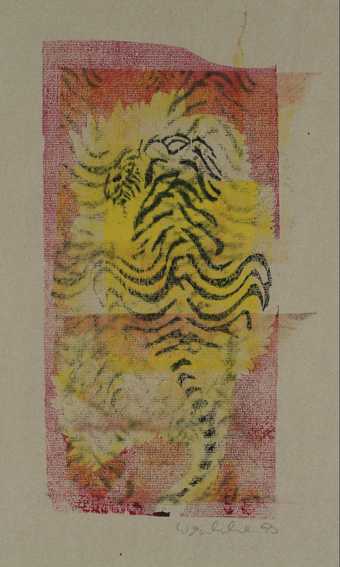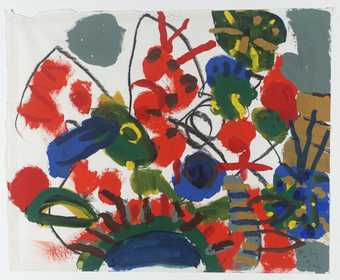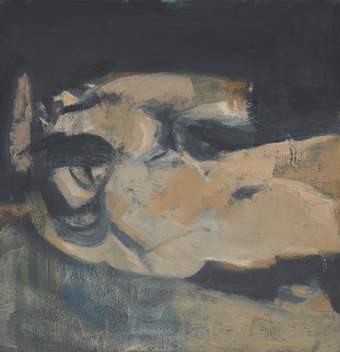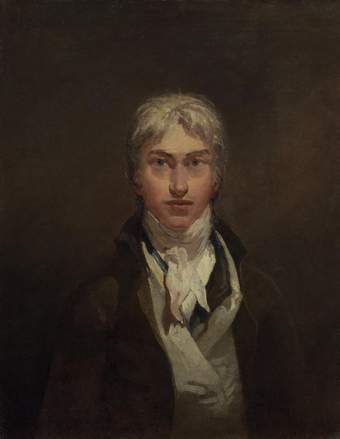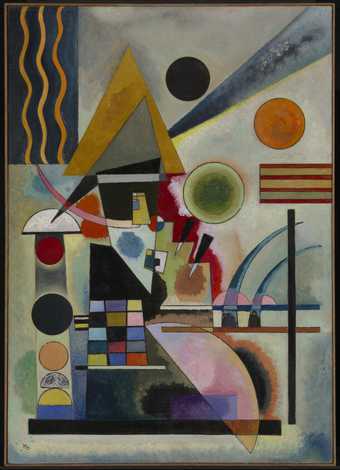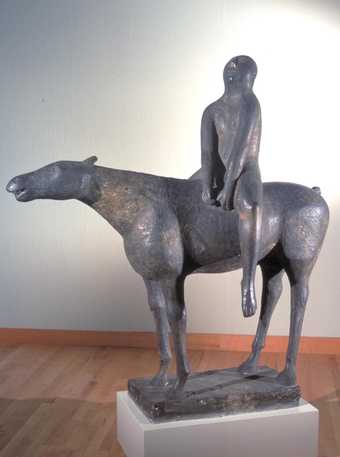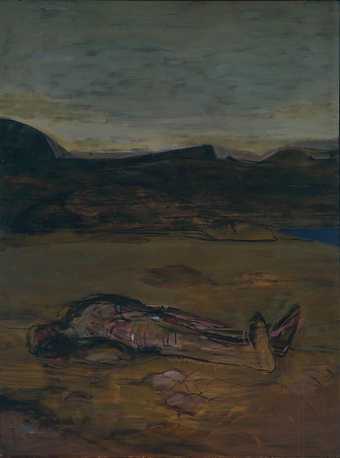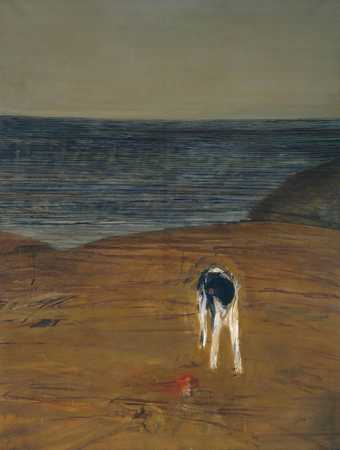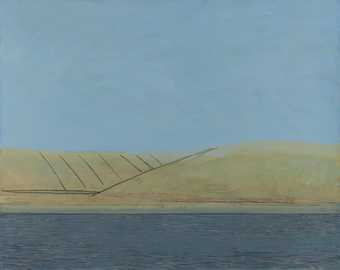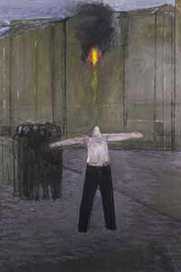
Karl Weschke Fire-Eater (with spectators) 1984-86
Celebrating a career that spans over fifty years, this exhibition, curated by Ben Tufnell, offers an opportunity to see a range of paintings and drawings from the 1950s to the present day. Weschke's work is strongly linked to his immediate environment, where the landscape often becomes a setting for mythic events which dramatise the human condition as a solitary, isolated struggle for survival.
Weschke (born 1925, Germany) came to England in 1945 as a POW. On release he decided to pursue a career as an artist, coming to live in Cornwall in 1955 where he established friendships with artists including Bryan Wynter, Roger Hilton, Peter Lanyon and the poet WS Graham. Paintings exhibited from this period include the enigmatic Portrait of Lore No.2 1954 and Meeting Point of Sky and Land 1961.
Landscape has remained one of Weschke's principal themes and from the 1960s onwards he focused on the elemental forces that activate it, as seen in works such as Sturmflöten 1965–6 and Gale 1974.
Weschke's work is often rooted in personal experience, then translated into images of universal significance. Body on the Beach 1977 and Caliban 1978 were both inspired by a diving accident. Similarly Feeding Dog 1977 and Fighting Dogs 1978 are a result of Weschke's observation of his own Borzoi hound, with the struggling animals being portrayed true to their nature.
His later works, such as The Fire-Eater with Spectators 1984–6, continued to present human beings as alienated, relating to philosophical post-war debates such as existentialism. The image depicts a street performer Weschke observed in Frankfurt. The pose of the central figure evokes a crucifixion, while a crowd of spectators seem to watch in fear.
Three trips made to Egypt in the 1990s had a profound effect on his use of colour, which took on a glow previously unseen in his paintings. In The Nile near Kom Ombo 1994, temple structures, columns, deserts and palm trees dominate, as human presence is reduced to a minimum.
To complement Weschke's exhibition, a group of works from the Tate Collection by artists he has a particular interest in is shown, including JMW Turner, John Chrome, Wassily Kandinsky, Karl Schmidt-Rottluff, Max Beckmann and Marino Marini.

